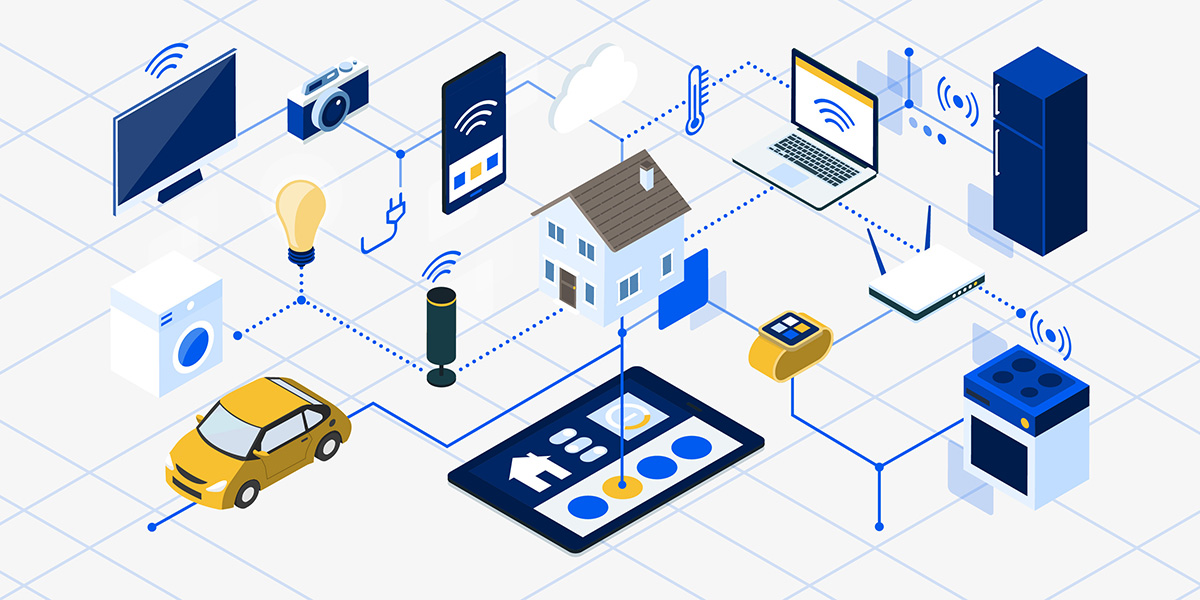Buzz Haven: Your Daily Dose of News
Stay informed and entertained with the latest buzz in news, trends, and insights.
When Your Toaster Starts Texting You: The Quirks of IoT
Discover the strange world of IoT as your toaster texts you! Uncover the fun quirks and challenges of our smart appliances.
Smart Kitchens: How IoT is Revolutionizing Your Breakfast Routine
The emergence of Smart Kitchens is transforming how we approach our morning meals, and at the forefront of this revolution is the Internet of Things (IoT). Imagine waking up to the aroma of freshly brewed coffee, precisely timed to coincide with your alarm. With IoT-enabled coffee makers, you can program your device remotely to start brewing as you rise. This level of automation allows for a seamless breakfast routine, where appliances communicate with each other and adjust their operations according to your preferences. Smart fridges can even monitor your ingredient levels, reminding you when you’re low on essentials like milk or eggs, thus preventing any last-minute grocery runs.
Moreover, the integration of smart devices in the kitchen extends beyond just coffee makers and refrigerators. For instance, smart toasters can achieve the perfect level of browning based on your taste, while connected thermometers ensure that your eggs are cooked to perfection. With voice-activated assistants, preparing breakfast can become a hands-free task; simply ask your assistant to preheat the oven or set the timer while you focus on other morning activities. As the IoT landscape continues to evolve, Smart Kitchens empower you to streamline your breakfast routine, enhancing convenience, consistency, and culinary creativity in your daily life.

When Appliances Become Chatty: Understanding IoT Communication
The rise of the Internet of Things (IoT) has transformed ordinary appliances into chatty devices that can communicate seamlessly with each other and with users. From smart refrigerators that notify you when you're running low on groceries to washing machines that can be controlled remotely via your smartphone, the evolution of these technologies has redefined convenience in our daily lives. Understanding how these appliances communicate involves exploring various protocols, such as MQTT (Message Queuing Telemetry Transport) and CoAP (Constrained Application Protocol), which facilitate their ability to send and receive data efficiently.
Moreover, the interaction between IoT appliances raises important questions about security and privacy. As these devices collect and transmit data about our habits and preferences, it is crucial to ensure that this information is protected from unauthorized access. Homeowners should consider implementing strong passwords, regular software updates, and robust network security measures to safeguard their IoT ecosystem. By grasping the fundamentals of IoT communication, users can enjoy the benefits of their smart appliances while maintaining control over their personal information.
Is Your Toaster Spying on You? The Privacy Concerns of IoT Devices
In today’s digital age, it's not just your smartphone or computer that could be spying on you; even your mundane kitchen appliances can pose privacy risks. Internet of Things (IoT) devices, like smart toasters or refrigerators, collect vast amounts of data about your habits and preferences. They are designed to make your life easier, but the data they gather can be exploited in ways you might not realize. For instance, some devices track when you use them, what you're consuming, and how often you make certain meals. This information can add up to a detailed profile of your daily routines, raising significant concerns about who has access to this data and how it's being used.
Moreover, the privacy concerns surrounding IoT devices like toasters are compounded by the fact that many users remain unaware of the potential vulnerabilities. Hackers can exploit security flaws to gain unauthorized access, which could lead to breaches of personal information. To safeguard against such threats, it’s essential to take proactive measures, such as changing default passwords, regularly updating device firmware, and periodically reviewing privacy settings. As we embrace convenience, it’s crucial to stay informed and vigilant about the devices in our homes that might just be more intrusive than we initially thought.